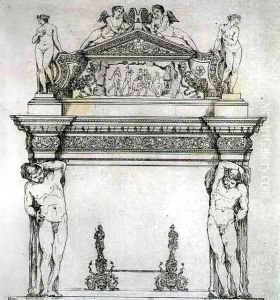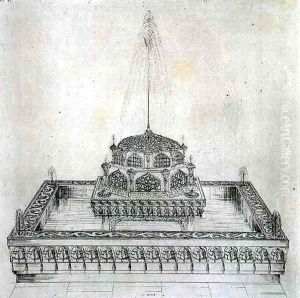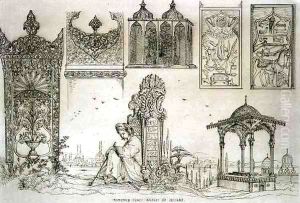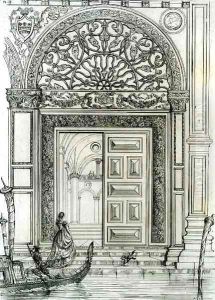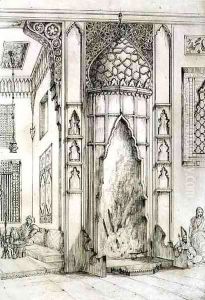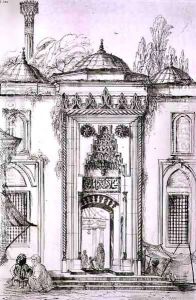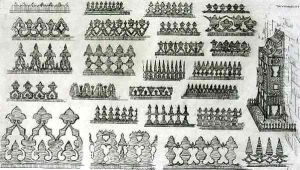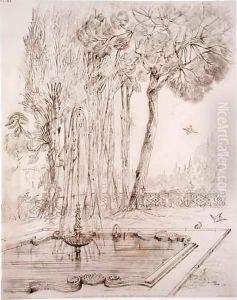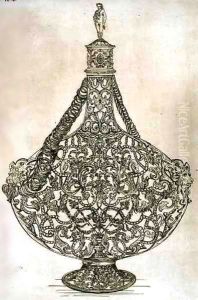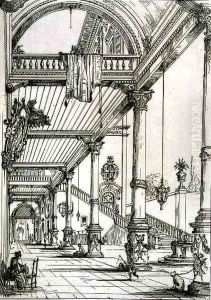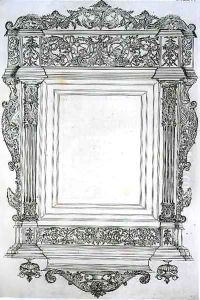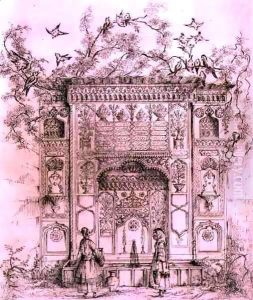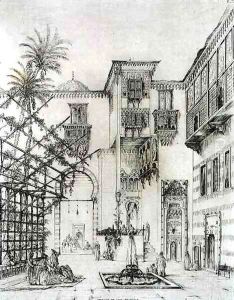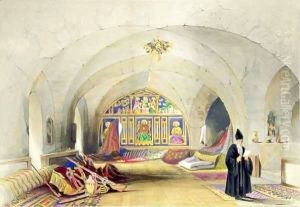Jean Francois Albanis de Beaumont Paintings
Jean Francois Albanis de Beaumont was an 18th-century French landscape painter and architect, born in 1755 in Chambéry, Savoy, which at the time was part of the Kingdom of Sardinia. His artistic journey began under the guidance of his father, who was also an architect. Beaumont's initial education was rooted in the world of architectural design, which greatly influenced his approach to landscape painting.
Beaumont's work is characterized by a meticulous attention to detail and a strong sense of composition, often reflecting the classical landscapes of the period. He was influenced by the works of French artists Claude Lorrain and Nicolas Poussin, who were known for their classical landscape paintings that evoked a sense of harmony and order.
During his career, Beaumont traveled extensively, particularly in Italy where he studied the Italian masters and was inspired by the beauty of the countryside. His travels are reflected in the geographical diversity of his landscapes, which include scenes from Italy, France, and other parts of Europe. He was adept at capturing the light and atmosphere of these different settings in his works.
Jean Francois Albanis de Beaumont was not only a painter but also an art teacher, sharing his knowledge and skills with a number of students. He taught at the Academy of Fine Arts in Turin, contributing to the arts in the region through his academic role.
Despite his contributions to landscape painting and architecture, Beaumont's work was somewhat overshadowed by the more famous artists of his time, and as a result, he is not as widely recognized today. He passed away in 1812, leaving behind a body of work that displays his love for the natural world and his dedication to the classical principles of art.
